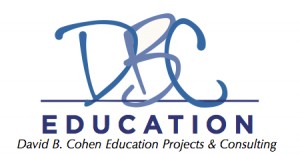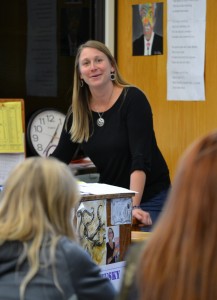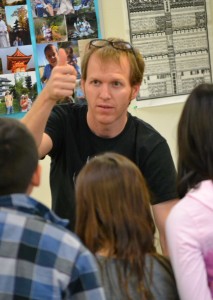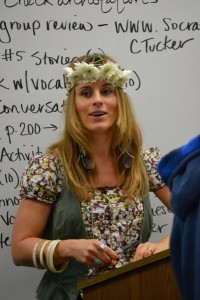In casual conversations about California regions or geography, you are likely to hear people casually refer to the San Francisco Bay Area, or the region around Sacramento, as “northern California.” People who know their geography also know better than to say that, as a quick check of the map will show San Francisco is roughly equidistant from both Los Angeles and Oregon.
Last week, I went on a road trip to visit schools that are really in Northern California, in the towns of Fortuna, Arcata, Palo Cedro, and then headed closer to the Bay Area for school visits in the towns of Napa and Windsor. The trip offered some interesting variety and contrasts, most striking at the extremes of Chrysalis Charter School – a K-8 teacher-led school of about 150 students – and Windsor High School, a comprehensive public high school enrolling over 1,700 students.
I’d have liked to write a blog post every day about these schools, but there was so much driving involved in this trip – 935 miles in all – that I was usually unable to gather and compose my thoughts by the end of the day. So here’s a recap of the whole week, in one blog post. And of course, if you find this project interesting and worthwhile, I encourage you to check out the Kickstarter campaign I’m running to try to crowdfund the work.
Monday, October 27 – Fortuna High School (Fortuna, CA)
I spent the entire school day with English teacher Tara Nuth Kajtaniak, an innovative educator I’ve known for a couple years through our work with the Institute for Teaching (IFT) and its regional teacher think tanks. IFT supports teacher-driven change as a non-profit project of the California Teachers Association. (IFT has also contributed funding for my travels). Tara has not only done some wonderful curriculum development, but she has also helped make her school more aware of grant opportunities from IFT, brining in funding for some excellent projects this year. One is a teacher grant supporting an innovative approach to physical education improving student health, and the other is a school site grant that supports community service projects by seniors. While it was a pleasure to see Tara running her classes with both a sense of purpose and humor, the highlight of the day for me was that Tara made sure I had ample opportunities to speak with students. I was impressed and heartened by their ability to articulate the value of their coursework and its applicability in improving their lives.
Tuesday, October 28 – Six Rivers Charter High School (Arcata, CA)
My host at Six Rivers was science teacher Shannon Morago. I connected with Shannon when she was honored by Carlston Family Foundation as one of their Outstanding Teachers of America in 2011. (This foundation accepts nominees for teaching awards from former students who have gone on to college, and cite the nominee as the most influential or supportive teacher in helping them succeed beyond high school). Shannon teaches science classes at this small, district-created charter school housed next door to Arcata High School and walking distance from Humboldt State University. Shannon teaches part-time at the school and is on the staff of Humboldt State, preparing future teachers. In the classroom, I saw how effectively Shannon pushed all of her students to think, and write, as scientists. Our conversation after her morning classes centered on the complexity of teaching, and the thousands of decisions that teachers make every day, especially if their classrooms are dynamic and interactive like Shannon’s. At any given moment, there are dozens of students not only working in their own way to process an educational experience, but also to navigate peer relationships in the classroom community. Where the teacher goes at any given moment, what they do with an individual or group of students, what they choose to address immediately, later, or not at all – all of these improvisations depend on having clear goals and values to guide the teacher through complex situations with many viable options for how to handle any given moment.
Wednesday, October 29 – Chrysalis Charter School (Palo Cedro, CA)
Chrysalis is a teacher-created and teacher-led school in Shasta County, near the town of Redding. I learned about the school through the book Trusting Teachers With School Success, and connected with the founders through author Kim Farris-Berg. The school was established nearly twenty years ago by Alysia and Paul Krafel, with teacher-leadership as a core part of the model. Instructional decisions, operational decisions, administrative and budget decisions – all are directed by the teachers. Walking around the school, and watching Casey Link teaching his fifth grade class all day, I wouldn’t say you could tell it was a teacher-led school on the surface, but it was very clear that Chrysalis is a warm and inclusive campus, where everyone feels a sense of ownership and pride in the school. In conversations with teachers past and present, I could see how the teacher leadership contributes to that atmosphere and to some of the innovative, flexible, and child-centered practices they have at Chrysalis.
Thursday, October 30 – New Technology High School (Napa, CA)
Most of my school visits are based on knowing or identifying a great teacher, so it’s unusual that I had two days in a row visiting schools where my interest was based on the instructional model. New Tech, as it’s called, is a school of choice, but not a charter school. You might guess from the name that the school has ample technology resources and usage in classes. Students also take many of their classes in large groups that combine subjects and teachers. I observed juniors studying history and English in a combined course, grouped together 60 in a room with two teachers, one certified in English and one in Social Sciences. I also observed a ninth grade class of similar size, with two teachers, and a curriculum combining biology, health, and physical education. The classrooms at the school are designed to make this work; the junior class I observed had cushioned office chairs with ergonomic adjustments, fully carpeted floors, high ceilings and windows, and students were able to move about quite a bit as they worked on video projects combining their historical studies with their interpretations of The Great Gatsby. For this visit, I’d like to thank Assistant Principal Riley Johnson for his help, and the following teachers for allowing me to observe their classes: Andre Baldauf, Nancy Hale, Christie and Tom Wolf.
Friday, October 31 – Windsor High School (Windsor, CA)
Halloween brought me to the classroom of Catlin Tucker, one of the more influential teachers in our state. Catlin is an author of books and articles, a blogger, and trainer and speaker specializing in the topic of blended learning. What I like about Catlin’s work in our field is her practicality and her emphasis on relationships in the educational process. I saw her share the stage with Arne Duncan, Andrew Ng, and Sal Khan a couple years ago, and she outshone all three in her ability to articulate how technology changes everything and nothing in teaching: everything, in terms of access to information, ways to share information, to create and disseminate new material and new ideas, and nothing, in terms of our need for supportive, meaningful, personal connections with other people. In her classroom (bearing in mind that it was Halloween), I saw very little that would, on the surface, suggest an instructor with particular skills in blended learning, but in fact, there was evidence of blended learning even when the technology itself wasn’t visible. For part of the lesson, students used their own smartphones to work on a quick review of run-on sentences. Later, students read aloud some short creative works using new vocabulary; it turned out that their peers some of their peers had already seen these works shared online. In anticipation of future homework, Catlin informed students she would share an assignment via Google Drive. So the overall lesson didn’t look or feel “techie” but it was clear that blended learning is simply part of the routine for students in Catlin’s class.
Overall, it was a terrific week to see how many different ways California kids experience school, how many different talents and innovations their instructors offer, and how many different ways schools, unions, districts and communities support learning. I’m continuing to travel around California throughout the school year, and I hope you’ll consider supporting that work so that I can keep blogging about the experience and produce a book sharing positive stories and information about California public education. More information on my Kickstarter page.






2 thoughts on “Real Northern California Road Trip”